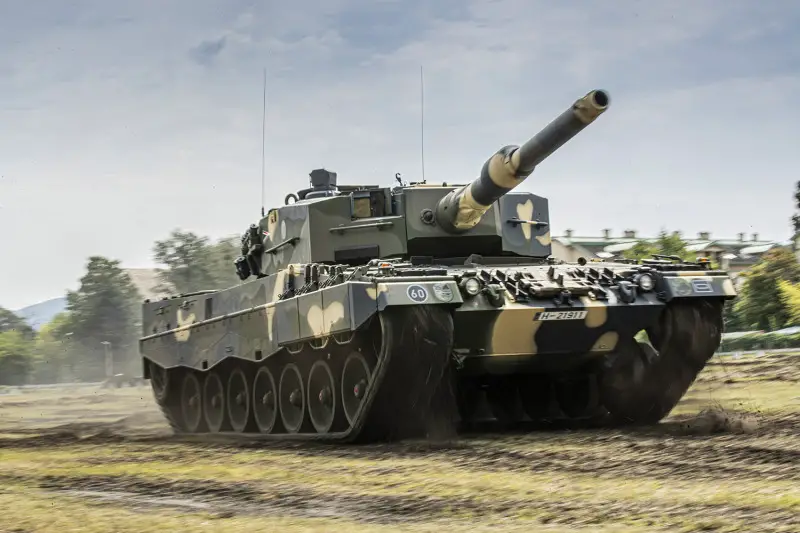The Hungarian armed forces have taken delivery of their first Leopard 2 tanks, which will be used for training. German Parliamentary State Secretary Thomas Silberhorn traveled to Hungary for the handover ceremony. They are designed to replace the Russian-made T-72 tanks that were previously used by the Hungarian Army. The Hungarian Ministry of Defense has signed a contract with Germany’s Krauss-Maffei Wegmann for 44 new Leopard 2A7+ main battle tanks and 24 PzH 2000 self-propelled howitzers. The contract is worth more than $565 million and included in addition 12 used Leopard 2 A4 tanks for training purposes. The new Leopard 2A7+ variant expected to be delivered to Hungary starting from 2023.

The Leopard 2 is a main battle tank developed by Krauss-Maffei in the 1970s for the West German Army. The main battle tank first entered service in 1979 and succeeded the earlier Leopard 1 as the main battle tank of the German Army. It is armed with a 120 mm smoothbore cannon, and is powered by a V-12 twin-turbo diesel engine. Various versions have served in the armed forces of Germany and 12 other European countries, as well as several non-European nations, including Canada, Chile, Indonesia, Singapore, and Turkey. There are two main development batches of the tank: the original models up to Leopard 2A4, which have vertically faced turret armour.

The most widespread version of the Leopard 2 family, the 2A4 models included more substantial changes, including an automated fire and explosion suppression system, an all-digital fire control system able to handle new ammunition types, and an improved turret with flat titanium/tungsten armour. The Leopard 2s were manufactured in eight batches between 1985 and 1992. All the older models were upgraded to 2A4 standard. Until 1994, Germany operated a total of 2,125 2A4s (695 newly built and the rest modified older versions), while the Netherlands had an additional 445 tanks. The 2A4 was also license manufactured in Switzerland as the Panzer 87 “Leopard” or Pz 87.

The Leopard 2A7+ is designed to operate both in low intensity and high intensity conflicts. The tank’s protection has been increased by modular armour; the frontal protection has been improved with a dual-kit on the turret and hull front, while 360° protection against RPGs and mine protection increase the survivability of the tank in urban operations. The modular armour’s system components were first used by Canada in Afghanistan. It can fire programmable HE munitions and the turret mounted MG3 has been replaced with a stabilised FLW 200 remotely controlled weapon station. The mobility, sustainability and situational awareness have also been improved.
















